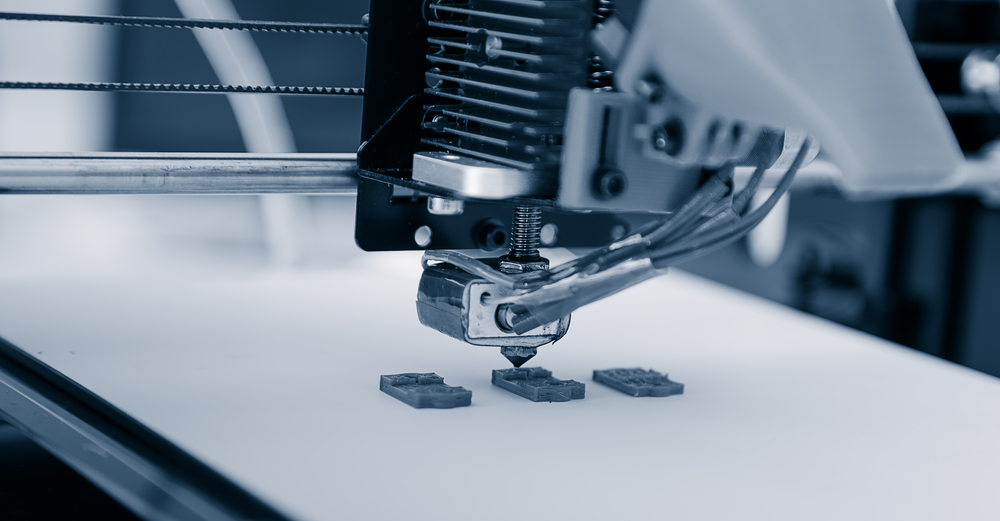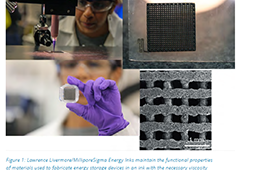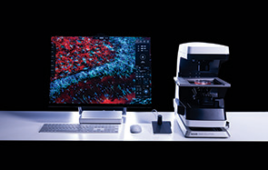
Additive manufacturing, or 3D printing as it is better known, is rapidly proving itself to be a disruptive technology in a variety of applications. The technique allows 3D objects to be quickly and simply created layer by layer, giving researchers the ability to prototype and customize objects of all shapes, sizes and functions, often out of unique materials that would be limited by traditional manufacturing practices.
Recently, R&D Magazine highlighted some of the applications as well as challenges, in this growing field, as part of our Special Focus series.
Materials
One area where 3D printing has already shown significant potential is in the material sciences. In the article, “How AI and 3D Printing are Revolutionizing Materials Design” MIT contributor Andrea LePain outlines how artificial intelligence is now making it possible for scientists to design thousands of new materials extremely quickly, opening the door for the creation of new classes of materials that are stronger, lighter, more flexible, and less expensive to manufacture. While it would traditionally be waste of time to blindly try out every possible combination, 3D printing enables engineers and designers to easily test new materials, depositing them deliberately in a particular point in space to build any scale structure, and either validate or eliminate the result. Each time this occurs, more data can be sent back to the algorithm so it grows smarter and smarter over time.
Electronics
A research collaboration from the University of California Santa Cruz and the U.S. Department of Energy’s Lawrence Livermore National Laboratory are using 3D printing to improve supercapacitor electrodes as outlined in our article, “3D Printed Graphene Aerogel Enhances Supercapacitor Ability.” Supercapacitors are used as energy storage devices because they can charge very rapidly—from seconds to minutes. They also retain their storage capacity through tens of thousands of charge cycles. Supercapacitors are used in a number of applications, including regenerative braking systems for electric vehicles.
The article reports how the team 3D printed a graphene aerogel that enabled them to develop a porous three-dimensional scaffold loaded with manganese oxide that yields better supercapacitor electrodes. The printed structure is a lattice composed of cylindrical rods of the graphene aerogel that are porous, in addition to the pores in the lattice structure. Supercapacitor devices made with the graphene aerogel/manganese oxide electrodes showed good cycling stability, retaining more than 90 percent of initial capacitance after 20,000 cycles of charging and discharging.
Medicine
Looking further into the future, 3D printing may someday revolutionize medicine, potentially giving us the ability to “print” tissue and possibly even organs for use inside the human body. While we aren’t there yet, many have made significant progress. A team of engineers from the University of Colorado Boulder have created a new method to 3D print while maintaining localized control of an object’s firmness, with the ultimate goal of 3D printing artificial arteries and organ tissue. We outlined their research in the article, “Researchers Take Steps Toward 3D Printing Artificial Blood Vessels and Arteries.”
The new layer-by-layer printing technique features fine-grain, programmable control over the object’s rigidity, enabling researchers to mimic the complex geometry of blood vessels that are highly structured but need to remain pliable.
Challenges
While 3D printing has sparked significant innovation, it has also resulted in several challenges.
Because 3D printers can be fairly easily used at home, it gives amateurs the ability to try and print their own, typically untraceable, firearms. University of Buffalo School of Engineering and Applied Sciences researchers are working to change that. In the article, “New Tech Tracks the “Fingerprints” of 3D Printed Guns” we highlighted a new technology they’ve created dubbed “PrinTracker” that they said can fingerprint the specific printer that a 3D-printed item originated from, enabling law enforcement agencies to track the origin of 3D-printed guns, counterfeit products and other goods. Each layer of a 3D-printed object contains small wrinkles—that are generally measured in submillimeters—called in-fill patterns that are supposed to be uniform in an ideal world. However, the printer’s model type, filament and nozzle size are among the factors that cause slight imperfections in the patterns and result in an object that does not perfectly match the design plan. Similar to a person’s fingerprint, the patterns are unique, repeatable and ultimately can be traced back to the original 3D printer.
The environmental impact of 3D printing is also being in considered by researchers. In the article, “Researchers Investigate Unsafe Emissions From 3D Printers” we featured the work of researchers at the Georgia Institute of Technology who are hoping to shed light on what is being emitted into the nearby atmosphere when 3D printers are fired up. After two years of research, the team discovered that several desktop 3D printers generate ultrafine particles (UFPs), which are known to cause a health risk when they are inhaled and penetrate deep into the pulmonary system. The researchers also identified more than 200 different volatile organic compounds (VOCs) that are released while 3D printers are in operation, several of which are known or suspected irritants and carcinogens.
What’s Next for R&D Special Focus
R&D Magazine will continue to take a deeper dive into one topic each month in 2019. In January we kick off our Special Focus series taking a look at graphene, a form of carbon consisting of a single layer of carbon atoms arranged in a hexagonal lattice. Because the material is flexible, strong, and extremely thin—it’s made from a layer of carbon one-atom thick—it’s versatile and has a plethora of exciting applications across R&D. Check back in January to learn more!




